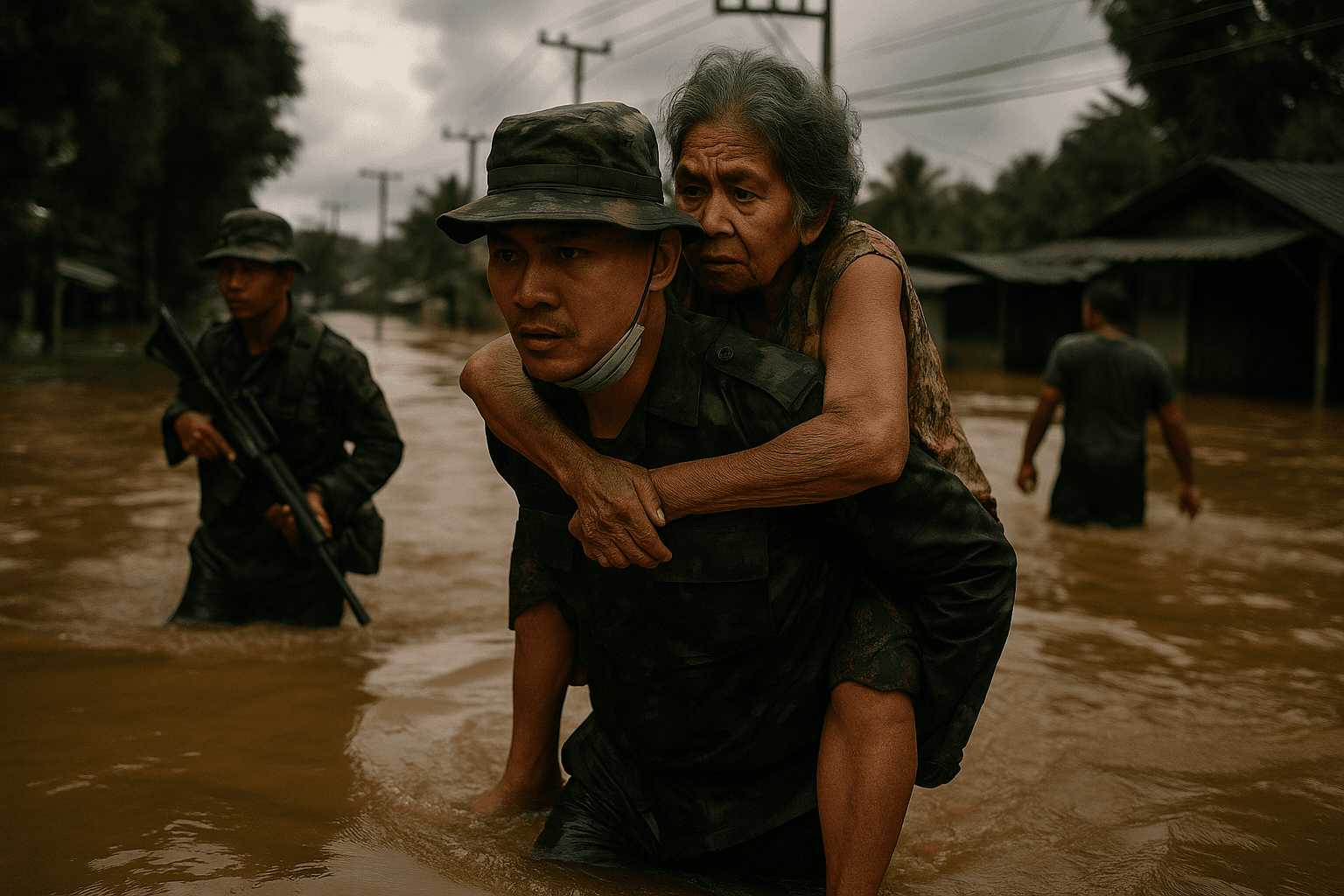Thailand Puts Military in Charge as Floods Devastate Southern Provinces
The Thai government has mobilized its armed forces to lead rescue and relief operations after weeks of torrential rains flooded large swaths of the south, isolating communities and swamping infrastructure. The move underscores the scale of the humanitarian crisis and raises questions about logistics, civil coordination, and regional implications for commerce and recovery.

Thailand’s government on November 25, 2025 has placed the military at the center of the national response to severe flooding across its southern provinces, mobilizing ships, aircraft, and additional troops to evacuate thousands, deliver supplies, and restore critical transport routes. Weeks of torrential rains have inundated towns, cut highways and rail links, and left many communities reachable only by water or air. Authorities warned that heavy rainfall will continue, deepening the complexity of the emergency.
The decision to elevate military command of relief work reflects the urgent need for large scale logistics and specialized assets that civilian agencies have struggled to marshal under deteriorating conditions. Naval vessels and aircraft carriers prepared to support operations signal an intention to mount amphibious and aerial evacuations, to move heavy loads of food, water, medical supplies and to assist in clearing and repairing ports and coastal infrastructure. Military engineers and transport units are being positioned to reopen arterial roads and to reestablish communication lines that are vital for both immediate rescue work and for economic recovery.
The floods represent some of the worst in the region in recent years, straining provincial administrations and stretching civil relief organizations. Isolated communities on low lying land and smaller islands are at particular risk, as rising waters and downpours complicate access and raise the prospects of secondary hazards such as landslides and contaminated water supplies. The agricultural and tourism sectors in the affected provinces face immediate disruption, and there are fears that longer term economic damage could ripple beyond the local level into national supply chains and regional maritime traffic.
Regional and international dimensions are likely to follow. Thailand may seek technical assistance and relief coordination through ASEAN mechanisms and international partners if the crisis persists. Under customary practice, a state retains primary responsibility for the protection of its citizens in disasters but can request and receive outside help. Such cooperation would need to balance rapid delivery of aid with respect for sovereignty and for humanitarian principles in complex operational environments where military and civilian actors work side by side.

The military led response also raises questions about coordination and oversight. Effective recovery will require clear command structures that integrate provincial authorities, civilian disaster agencies, and international relief teams where involved. Communication with affected populations and transparent allocation of resources will be critical to prevent bottlenecks and to safeguard human rights during mass evacuations and sheltering operations.
As crews work to reopen roads and ports, meteorologists and emergency planners emphasize that continued precipitation could prolong rescue operations and complicate recovery. For communities and businesses in the south, the coming days will determine whether immediate relief can be translated into a sustainable path toward reconstruction and resilience in the face of intensifying extreme weather across the region.

